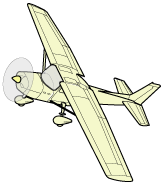 |
||||||||
| Issue Number 261 |
May
2001
|
|||||||
|
P.O. Box 189, Moffett Field, CA 94035-0189 |
||||||||
|
|
||||||||
 |
||||||||
| Issue Number 261 |
May
2001
|
|||||||
|
P.O. Box 189, Moffett Field, CA 94035-0189 |
||||||||
|
|
||||||||
![]()
The April 2000 (#250) issue of CALLBACK featured an article on the adverse effects of passenger misconduct on flight crews. Included was an ASRS report about a drunken passenger carried on board an airliner in a wheelchair by the airline’s passenger assistance staff. The Captain involved in this incident commented:
Unfortunately, that report wasn’t an isolated incident. ASRS recently received a report submitted by a Flight Attendant describing an almost identical event:
The crew’s response in this situation was "right on." FAR 121.575(c) states, "No certificate holder may allow any person to board any of its aircraft if that person appears to be intoxicated." A 1998 ASRS study on passenger misconduct incidents concluded that passengers should be monitored for intoxication and erratic behavior prior to boarding, and denied boarding if their behavior appears likely to pose a safety hazard during flight.
Another recent incident reported to ASRS by an air carrier Captain involved an altitude deviation related to a passenger disturbance:
Flight crews involved in similar situations may want to consider notifying ATC of the single-pilot cockpit operation while internal flight problems are being resolved.
"A
Tight 360"
Single-pilot operations can also challenge General Aviation pilots, particularly when the flight occurs at night in Instrument Meteorological Conditions, and the pilot is experiencing subtle physical incapacitation. A GA pilot described an episode of spatial disorientation that occurred while attempting to respond to an ATC instruction.
The pilot listed contributing factors in the continuation to his report:
The reporter had flown only a few hours in the last 90 days before the incident occurred. In hindsight, a safer response would have been to inform ATC, "unable 360."
 Insect
infestations and their associated safety hazards are not limited to
smaller aircraft parked outdoors. They can also pose a problem for commercial
passenger and cargo jets. An MD-80 Captain’s report offers a contemporary
version of the ant-and-grasshopper story:
Insect
infestations and their associated safety hazards are not limited to
smaller aircraft parked outdoors. They can also pose a problem for commercial
passenger and cargo jets. An MD-80 Captain’s report offers a contemporary
version of the ant-and-grasshopper story:
The effect of insects on equipment is not an idle concern, as demonstrated by another aircrew’s "buggy" experience. The First Officer reported to ASRS:
A Smoke Alarm Sounds on Short Final...
A DC-9 Captain reports an aircraft emergency that was handled well by the cabin and flight crew but has training implications.
The Captain obtained the information on Flight Attendant training during a post-event debriefing of all crew members. He submitted an extensive report of the incident to his company, including Flight Attendant training and air carrier flight safety personnel.
Air carrier and corporate pilots routinely undergo alarm recognition and related emergency systems training. A similar training regimen for this company’s cabin crew might have prevented confusion during the emergency.
| ASRS Recently Issued Alerts On... |
|---|
| Bleed duct clamp failure on a EMB-145LR |
| Signage and marking at a South American airport |
| Failures of GE CT7-9B2 tailpipe temperature sensors |
| B767-300 inflight smoke caused by a standby AC inverter |
| Maintenance-related B717 thrust reverser incident inflight |
| MARCH 2001 Report Intake | |
|---|---|
|
Air
Carrier/Air Taxi Pilots
|
2,503
|
|
General
Aviation Pilots
|
582
|
|
Controllers
|
85
|
|
Cabin/Mechanics/Military/Other
|
191
|
|
TOTAL
|
3,361
|